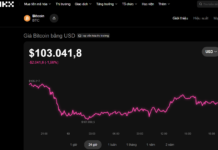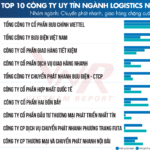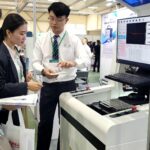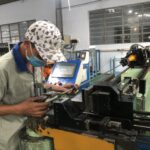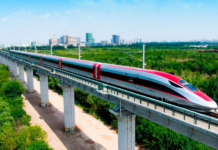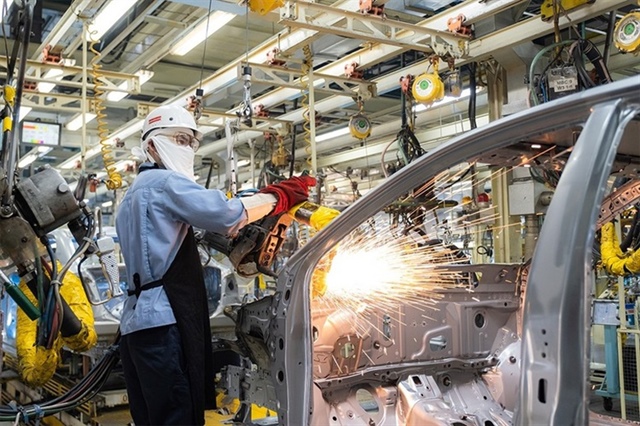
Vietnam currently has approximately 1,700 FDI companies operating in the supporting industries sector, accounting for about 40% of the total number of enterprises in the industry. However, the localization rate in many fields remains modest. |
Supporting industries are considered the “backbone” of the processing and manufacturing industry and are a key factor for Vietnam to deeper participate in the global value chain.
According to Mr. Vu Ba Phu, Director of the Trade Promotion Agency (Ministry of Industry and Trade), there are currently about 1,700 FDI enterprises operating in the supporting industries in Vietnam, accounting for approximately 40% of the total number of enterprises in the industry. However, going deeper into the industry structure, the localization rate in many fields is still modest: Textile and garment – leather and footwear reached about 45-50%, mechanical manufacturing 15-20%, and automobile assembly only 5-20%. Meanwhile, about 6,000 domestic supporting industry enterprises can only meet 10% of the demand for spare parts and components for production.
For domestic enterprises alone, the localization rate is only about 15.7%. These figures show that Vietnamese enterprises are still outside the “big playground” and need strong support in technology, management, technical standards, and connection opportunities to effectively participate in the global supply chain.
Sharing from the practical experience of supporting enterprises, Mr. Pham Hai Phong, Chief of Office of Vietnam Supporting Industries Association (VASI), said that participating in the supply chain, especially in the manufacturing industry, is not an easy journey. Enterprises need long-term commitment and a methodical allocation of resources and personnel for improvement and integration.
A typical example is a member enterprise of VASI, which initially only participated in exhibitions in Germany as an observer. After realizing the potential, the enterprise actively invested in technology innovation, participated in on-site consulting and training programs, and gradually gained the capacity to supply large corporations. By 2023, the enterprise had expanded two more factories, tripling its output. This clearly demonstrates that it takes 9-10 years of persistent investment in technology and people to “break into” the global supply chain.
Prioritizing 5 main fields
From a policy perspective, Mr. Chu Viet Cuong, Director of the Center for Industrial Development Support (Department of Industry, Ministry of Industry and Trade), said that on July 19, 2025, the Prime Minister signed and issued Decree No. 205 amending and supplementing Decree 111/2015 on the development of supporting industries. This is an important step to remove obstacles that have existed for almost a decade, creating more favorable conditions for enterprises to access support policies.
According to Mr. Cuong, one of the focuses of the new policy is to develop a system of industrial support centers at both regional and local levels. Currently, two regional centers have been established: the Northern Industrial Development Support Center (IDC) and the Southern Center. In the future, localities will also establish similar centers, operating under the management of the Departments of Industry and Trade. These centers play a role in training, consulting, technology transfer, and testing product support, thereby improving the capacity of local enterprises.
In addition, the Department of Industry also regularly coordinates with multinational corporations such as Samsung, Toyota, etc., to select potential domestic enterprises, support them in improving production, and meet the conditions to become second-tier or even first-tier suppliers to these corporations. Especially, according to Decree 205, the State will support up to 70% of the cost for technology transfer activities, which is an important incentive for enterprises to boldly invest in innovation.
In terms of strategic orientation, Mr. Chu Viet Cuong said that the Department of Industry selects a number of key supporting industries to invest in depth, avoiding the situation of spreading resources. Specifically, priority is given to 5 main fields such as mechanical engineering, automobiles, electricity – electronics and semiconductors, textiles and garments – leather and footwear, and basic materials.
For the mechanical industry, the focus is on producing spare parts and accessories serving large domestic production industries. The automotive industry is also considered a potential market, with a localization rate of only 15-20%, while the target by 2030 is 30-40%. Attracting FDI into high-tech processes such as car frame production, gearbox, and control unit manufacturing is a top priority.
The electricity – electronics and semiconductor industry is currently leading in attracting FDI, contributing more than 30% of the export value of the processing and manufacturing industry. Vietnam is forming specialized industrial clusters in Bac Ninh, Hai Phong, and Ho Chi Minh City, while coordinating with corporations such as Samsung, Intel, and LG to train a team of engineers specializing in electronic circuit design and processing.
In the textile and garment – leather and footwear industry, Mr. Cuong said that due to a large dependence on imported raw materials, the development orientation is to promote the production of technical fibers, artificial leather, biological soles, etc., to reduce imports and increase domestic value. Meanwhile, the basic materials industry is identified as a key bottleneck. Accordingly, there will be strong investment in the production of aluminum alloys, engineering plastics, technical rubber, materials for electric vehicle batteries, 5G components, etc.
Anh Tho
– 14:53 08/05/2025
Steering Vietnam’s Economy Through Choppy Waters
The global economy in 2025 is predicted to continue facing headwinds, despite the notable achievements of 2024. As a result, the Vietnamese economy will also feel the impact. However, the country is on the rise and has a unique opportunity to become a shining star in global trade.
Unlocking Capital for Businesses: Access up to 200 Billion VND with 0% Interest Rates
“The Ho Chi Minh City government is offering preferential loans of up to VND 200 billion per project at 0% interest to businesses with projects in the supporting industries sector. This initiative aims to boost key industries, including automation and mechanical engineering, electronics, information technology, textiles, and footwear.”
Unlocking Capital for Businesses: Access up to 200 Billion VND with 0% Interest Rates
“The Ho Chi Minh City government is offering preferential loans of up to VND 200 billion per project at 0% interest to businesses with projects in the supporting industries sector. This initiative aims to boost key industries, including automation and mechanical engineering, electronics, information technology, textiles, and footwear.”




















